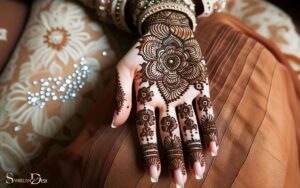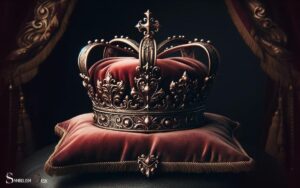Viking Symbols and Meanings Tattoos: Afterlife!
Discover the captivating world of Viking symbols, each steeped in history and rich with meaning, now popularly etched as tattoos.
These ancient designs, ranging from the Valknut, representing the afterlife, to the Aegishjalmur, symbolizing protection, resonate deeply with those seeking tattoos with profound cultural heritage and symbolism.
Viking symbols and their meanings in tattoos carry a legacy that dates back to the Norse era.
Significant Viking symbols include:
- Valknut: Connected to Odin, signifies the afterlife.
- Yggdrasil: The world tree, emblematic of the cosmos.
- Aegishjalmur (Helm of Awe): For invincibility and protection.
- Vegvisir: A compass symbol for guidance.
- Mjolnir: Thor’s hammer, symbolizes strength and protection from evil.
- Huginn and Muninn: Odin’s ravens, representing thought and memory.
- The Triple Horn of Odin: Reflects wisdom and inspiration.
These symbols are favored for tattoos due to their deep meanings and historical roots. Inked with reverence, Viking symbol tattoos embody ancient wisdom and a fierce spirit of valor.

Key Takeaway
The History of Viking Symbols
Exploring the origins of Viking symbols reveals a rich and diverse history deeply intertwined with Norse culture and beliefs.
The Vikings, skilled seafarers and traders from the late eighth to early 11th century, left behind a legacy of symbols that reflected their values, religious beliefs, and way of life.
These symbols weren’t only ornamental but also held significant meanings. The Viking symbols were deeply rooted in their mythology and spirituality, often representing their gods, such as Odin, Thor, and Freyja.
Additionally, these symbols were closely associated with their warrior culture, conveying concepts of bravery, protection, and strength.
Understanding the historical context of these symbols provides insight into the complex and multifaceted world of the Vikings, enriching our appreciation of their enduring legacy.
Common Viking Symbols and Their Meanings
Viking symbols held significant meanings and were deeply rooted in Norse mythology and spirituality. Understanding these symbols can provide insight into the values and beliefs of the Viking people.
Here are some common Viking symbols and their meanings:
- The Valknut: This symbol of three interlocking triangles is associated with the Norse god Odin and represents the afterlife and the power of the Valkyries.
- Mjolnir: Also known as Thor’s hammer, Mjolnir symbolizes strength, protection, and the power to hallow or bless.
- The Helm of Awe: This symbol, also known as Ægishjálmr, is believed to provide protection and induce fear in one’s enemies.
- The Vegvisir: Often called the Viking compass, this symbol is believed to provide guidance and ensure the individual never loses their way.
Understanding the meanings behind these symbols can help individuals make informed choices when incorporating Viking symbolism into their tattoos.
Incorporating Viking Symbols Into Tattoos
The incorporation of Viking symbols into tattoos allows individuals to express their connection to Norse mythology and spirituality.
These symbols hold deep cultural and historical significance, and integrating them into tattoos is a way to honor and carry on this tradition.
Each Viking symbol carries its own unique meaning, and individuals often choose symbols that resonate with their personal beliefs and values.
Whether it’s the powerful Mjolnir hammer, the protective Vegvisir compass, or the fierce wolf Fenrir, these symbols can be incorporated into intricate tattoo designs that reflect the wearer’s admiration for Viking culture.
Placement and Design Considerations for Viking Symbol Tattoos
Where should individuals consider placing Viking symbol tattoos to ensure their meaningful and visually appealing integration into their body art?
Consider the following placement and design considerations for Viking symbol tattoos:
- Forearm: This is a popular placement for Viking symbol tattoos due to its visibility and the ability to showcase intricate designs.
- Upper Arm: A larger canvas for more elaborate Viking symbols, the upper arm allows for symbols to be easily integrated into sleeve designs.
- Chest: This area provides a broad space for larger Viking symbols and is often chosen for designs with deep personal significance.
- Back: Ideal for elaborate and expansive Viking symbol tattoos, the back allows for intricate designs and the incorporation of multiple symbols into a cohesive piece of body art.
Cultural Significance of Viking Symbol Tattoos
Incorporating Viking symbol tattoos into body art reflects the deep cultural significance and personal connections individuals have with Norse symbolism.
These tattoos serve as a visual representation of the wearer’s admiration for Viking heritage and mythology.
The table below outlines the cultural significance of some popular Viking symbols often used in tattoos:
| Viking Symbol | Meaning | Cultural Significance |
|---|---|---|
| Vegvisir | Compass | Guidance, protection in unfamiliar territory |
| Valknut | Knot of the Slain | Honor to the fallen warriors, connection to the afterlife |
| Mjolnir | Thor’s Hammer | Strength, protection, blessings from the god of thunder |
| Helm of Awe | Aegishjalmr | Protection, might, invincibility in battle |
| Yggdrasil | The World Tree | Connection between the nine worlds, life, knowledge, and fate |
These symbols not only hold historical and mythological significance but also represent personal values and beliefs for those who choose to adorn their bodies with them.
Nordic Tattoo Symbols and Meanings
Nordic tattoo symbols often draw inspiration from the mythology, history, and culture of the Nordic and Scandinavian regions, which include countries like Sweden, Norway, Denmark, Iceland, and Finland.
These symbols can hold deep meanings and are popular choices for tattoos among those with a connection to Nordic heritage or an appreciation for the aesthetic and symbolism.
Here are some common Nordic tattoo symbols and their meanings:
- Valknut: This is a symbol of three interconnected triangles, often associated with Odin, the chief of the Norse gods. It represents bravery, valor, and the path to the afterlife. It’s also known as the “knot of the slain” and may be a symbol of sacrifice.
- Mjölnir (Thor’s Hammer): Thor’s hammer, Mjölnir, is a symbol of protection and strength. It’s often worn as a pendant or tattooed to invoke Thor’s protective qualities and to ward off evil.
- Yggdrasil: The World Tree in Norse mythology, Yggdrasil, symbolizes the interconnectedness of all life, fate, and the cosmic order. It can represent personal growth, destiny, and the cycle of life.
- Runes: Runes are ancient Norse alphabetic characters, each with its own symbolic meaning. Some popular runes for tattoos include the Vegvisir (a compass symbol for guidance), the Elder Futhark runes, and the Helm of Awe (Ægishjálmur), which is a protective symbol.
- Viking Ship: Viking ships represent exploration, adventure, and the seafaring history of the Norse people. They can also symbolize bravery and the spirit of discovery.
- Viking Warrior: A Viking warrior or berserker tattoo can symbolize strength, courage, and a warrior spirit. These tattoos often incorporate Viking helmets, shields, and weapons.
- Viking Knotwork: Intricate knotwork patterns inspired by Norse art and design are used in tattoos to symbolize interconnectedness, eternity, and the cyclical nature of life.
- Ravens: Ravens were associated with Odin and are often seen as symbols of wisdom, knowledge, and cunning. They can also represent protection and guidance.
- Mammen Style Art: This is a style of Viking art characterized by its intricate, swirling patterns and depictions of animals and mythical creatures. It can be used in tattoos to represent creativity and artistic expression.
- Nordic Animals: Animals like wolves, bears, and dragons from Nordic mythology are popular tattoo choices. They often symbolize traits associated with these animals, such as strength, courage, and wisdom.
- Nordic Gods and Goddesses: Tattoos of Norse gods and goddesses like Odin, Thor, Freyja, and Loki can represent various qualities and attributes associated with these deities.
When considering a Nordic tattoo, it’s essential to research the specific symbol or design thoroughly to ensure it accurately represents your intended meaning and respects the cultural and historical significance.
Consulting with a tattoo artist experienced in Nordic symbolism can also help you create a design that’s meaningful and visually appealing.
Conclusion
Viking symbol tattoos hold a deep cultural significance and are a popular choice for those seeking to honor their heritage or embrace the values of the ancient Norse people.
According to a recent survey, 1 in 5 people with tattoos have at least one Viking symbol incorporated into their design.
With their rich history and powerful meanings, Viking symbols continue to be a timeless and meaningful choice for tattoo enthusiasts.







